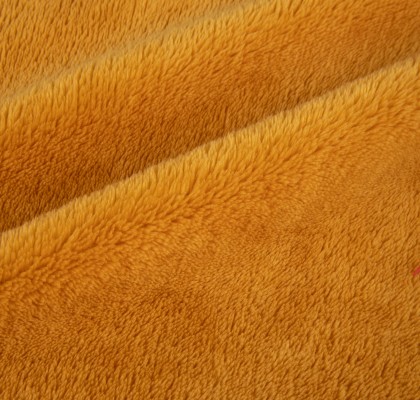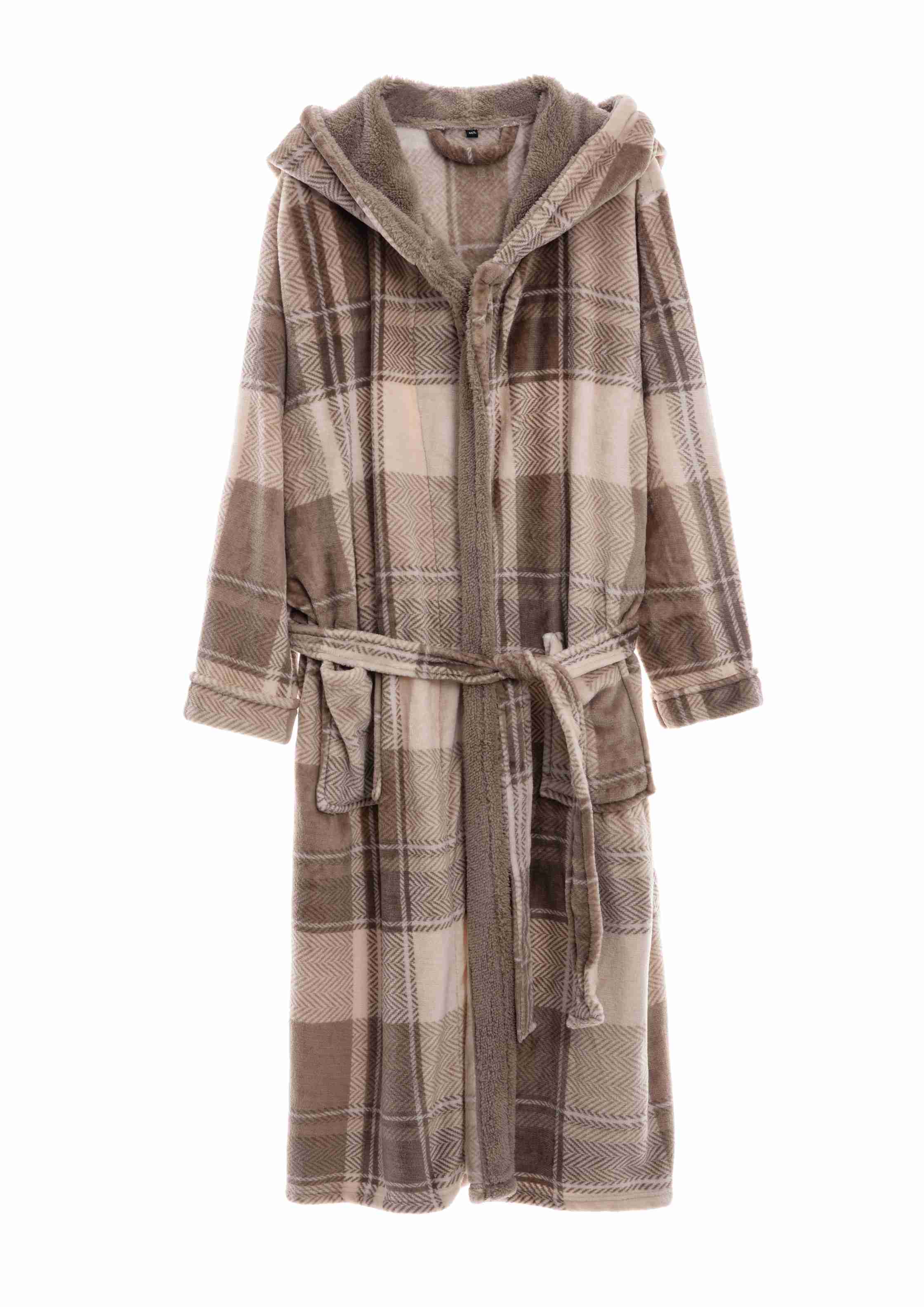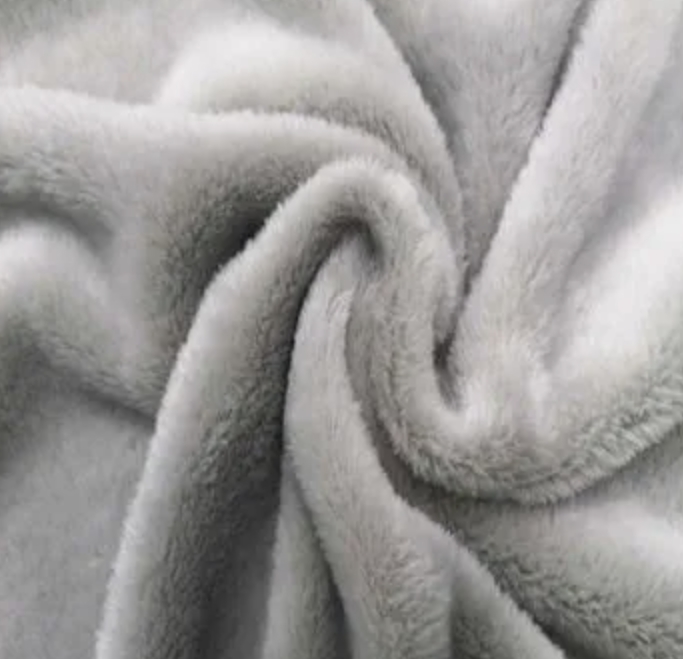Fleece fabrics have become a staple in clothing, home textiles, and outdoor gear due to their softness, warmth, and versatility. Among the various types of fleece, Anti-Pill Fleece Fabric has emerged as a superior choice for both consumers and manufacturers. Unlike regular fleece, anti-pill fleece resists the formation of small fabric balls, or pills, which can develop after repeated wear and washing. This characteristic not only enhances the garment’s appearance over time but also extends its durability, making it an appealing option for premium apparel, children’s wear, and performance clothing.
What Is Anti-Pill Fleece Fabric?
Anti-pill fleece fabric is a type of polyester or polyester-blend fleece that undergoes specialized finishing processes to prevent pilling. Pilling occurs when fibers break or loosen during washing or friction and form small balls on the fabric surface. Anti-pill fleece incorporates high-quality synthetic fibers and innovative treatments to minimize fiber loosening and reduce friction damage.
The result is a fabric that maintains a smooth surface even after prolonged use, improving both appearance and comfort. Key characteristics include:
Smooth texture that retains a soft feel
Durable fibers that resist abrasion
Consistent insulation throughout the garment
Minimal color fading due to stable synthetic fibers
This combination of attributes makes anti-pill fleece ideal for products that need to withstand heavy use, such as outerwear, hoodies, blankets, and children’s clothing.
Composition and Manufacturing Process
Fiber Selection
Anti-pill fleece is typically made from polyester, polyester-cotton blends, or high-performance synthetic fibers. The selection of fiber is crucial because synthetic fibers like polyester are inherently more resistant to pilling compared to natural fibers like cotton. Manufacturers often use longer staple fibers and tighter yarn twists to further enhance durability.
Fabric Construction
Fleece is constructed using a knit structure, usually a warp or weft knit, which provides elasticity and a soft surface. Anti-pill fleece undergoes additional processing steps such as singeing, shearing, or chemical treatment to smooth the fibers and reduce loose ends.
| Feature | Regular Fleece | Anti-Pill Fleece Fabric |
|---|---|---|
| Fiber Type | Polyester or cotton blends | High-quality polyester or synthetic blends |
| Surface Smoothness | Can develop pills quickly | Maintains a smooth surface |
| Durability | Moderate, susceptible to abrasion | High, resists wear and friction |
| Appearance After Wash | Pilling occurs | Minimal pilling, looks new longer |
| Ideal Uses | Casual wear, blankets | Premium apparel, kids’ wear, performance gear |
Finishing Processes
Anti-pill fleece typically goes through the following finishing techniques:
Singeing: Exposing the fabric to controlled heat or flame to remove loose fibers.
Shearing: Cutting the surface fibers to achieve uniform pile height.
Chemical Treatment: Applying anti-pilling agents that bond fibers and reduce friction effects.
Brushing: Raising the fabric surface to improve softness while maintaining anti-pill properties.
These processes differentiate anti-pill fleece from standard fleece, which may not receive the same level of finishing.

Advantages of Anti-Pill Fleece Fabric
Anti-pill fleece offers several benefits over regular fleece:
Longevity and Appearance
Anti-pill fleece maintains a fresh, new look after multiple washes. It is ideal for garments and home textiles that require repeated laundering without degradation in appearance.
Enhanced Comfort
With a soft, consistent texture, anti-pill fleece provides superior comfort, making it suitable for loungewear, pajamas, and children’s clothing.
Durability
The resistance to fiber breakage and pilling ensures that garments retain their structural integrity, reducing the need for early replacement.
Cost Efficiency
Although anti-pill fleece may have a slightly higher upfront cost, the extended lifespan of the fabric reduces long-term replacement expenses, making it economical for consumers and commercial buyers.
Performance and Versatility
Anti-pill fleece can be adapted for various purposes, from casual fashion and sportswear to home textiles. Its lightweight insulation also makes it suitable for layering in cold-weather clothing.
Comparison with Regular Fleece
The differences between anti-pill fleece and standard fleece can be highlighted through multiple dimensions:
| Aspect | Regular Fleece | Anti-Pill Fleece Fabric |
|---|---|---|
| Pilling Resistance | Low | High |
| Longevity | 1-2 years with frequent washing | 3-5 years, depending on use |
| Surface Smoothness | Degrades quickly | Maintains softness |
| Fiber Integrity | Breaks easily | Maintains structure |
| Cost | Lower upfront | Higher upfront but more cost-effective long-term |
| Ideal Application | Casual wear, blankets | Premium apparel, kids wear, sportswear, performance textiles |
Real-Life Case Studies
Several brands and manufacturers have switched to anti-pill fleece to improve product longevity:
Children’s Clothing: Soft, durable fleece reduces wear and tear during active play.
Performance Outerwear: Retains insulation and appearance despite repeated washing and exposure to friction.
Home Textiles: Anti-pill blankets and throws maintain a smooth surface, enhancing aesthetic appeal.

Applications of Anti-Pill Fleece Fabric
Anti-pill fleece is widely used in several industries:
Apparel
Hoodies and Sweatshirts: Retains softness and reduces unsightly pills.
Pajamas and Loungewear: Offers consistent comfort and appearance.
Children’s Clothing: Durable fabric withstands heavy use.
Outerwear Layers: Lightweight yet insulating, ideal for jackets and vests.
Home Textiles
Blankets and Throws: Maintains smooth surface and softness.
Cushions and Pillow Covers: Resists pilling during regular use.
Pet Bedding: Durable and comfortable for pets.
Sportswear and Performance Gear
Base Layers: Provides insulation without pilling.
Hiking and Camping Apparel: Maintains functional properties after extended use.
Care and Maintenance of Anti-Pill Fleece Fabric
To maximize the lifespan of anti-pill fleece garments:
Washing: Use cold water and gentle cycles to reduce fiber stress.
Detergent: Avoid harsh chemicals; mild detergents help preserve the finish.
Drying: Air drying or low-temperature tumble drying prevents fiber damage.
Storage: Fold neatly; avoid heavy compression to maintain pile structure.
Avoid Abrasion: Minimize contact with rough surfaces to prevent localized pilling.
Innovations and Trends
Anti-pill fleece is benefiting from advancements in textile technology:
Microfiber Integration: Ultra-fine fibers improve softness and anti-pilling performance.
Blended Fabrics: Mixing synthetic fibers with natural fibers creates better insulation and feel.
Sustainable Finishes: Eco-friendly anti-pilling treatments reduce environmental impact.
Custom Printing: Anti-pill fleece can be printed or dyed without compromising surface integrity.
Market Trends
The global fleece fabric market is expected to grow steadily, with anti-pill variants gaining a larger share due to consumer demand for durable, high-quality garments. E-commerce, sustainable fashion, and children’s apparel are key growth segments.
Anti-pill fleece fabric represents a significant advancement over standard fleece, offering superior durability, comfort, and aesthetic longevity. Its resistance to pilling, combined with innovative finishing processes, makes it suitable for a wide range of applications from fashion to home textiles and performance gear. For manufacturers and consumers alike, anti-pill fleece is a reliable, cost-effective, and high-performing choice.
By understanding the differences between anti-pill and regular fleece, selecting appropriate fiber compositions, and following recommended maintenance practices, users can enjoy soft, long-lasting, and visually appealing textiles that stand the test of time.




